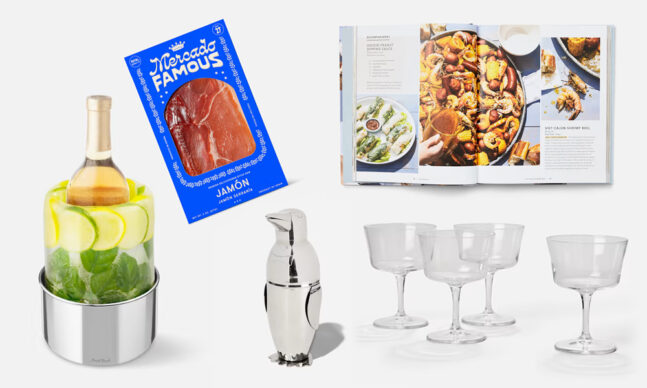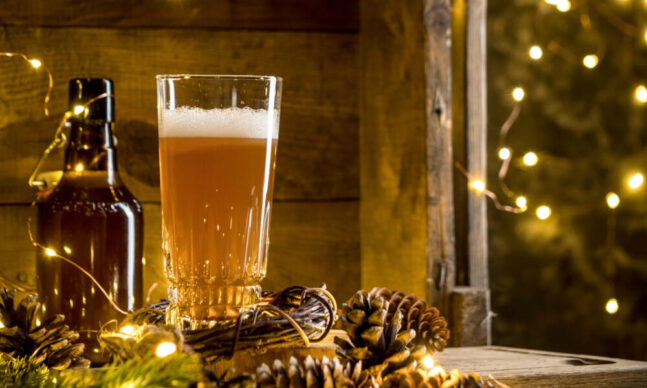I firmly believe that there’s never a bad time for sparkling wine. As a writer, I’ve had the chance to visit wineries from Champagne to California and have fallen in love with more than my fair share of bubbly that I try to keep around the house at all times. But there’s something special about popping a bottle of Champagne at the end of the year.
“No wine handles a holiday celebration quite like Champagne does,” says Eric Hemer, senior vice president and director of wine education for Southern Glazer’s Wine & Spirits. “From the slight pop of the cork to the bubbles in the glass, Champagne is both festive and has food-friendly versatility as well. In fact, depending upon the foods you intend to serve, Champagne can be a solo act from start to finish. The combination of crisp acidity, bright fruit and CO2 bubbles allows Champagne to pair well with a wide variety of hors d’oeuvres, such as smoked salmon, caviar, cheeses, ham, nuts, olives, potato chips and so much more.”
That said, Champagne may not be your speed when the calendar changes over this time around. Luckily, there’s prosecco, cava, crémant, and a range of off-beat producers making wildly underrated sparkling wine around the world.
What’s the Difference Between Champagne and Sparkling Wine?
Champagne is a sparkling wine produced in the Champagne region of France, located about 90 miles northeast of Paris. It’s is made using the “méthode champenoise,” in which the wine is fermented in the bottle in which it will be sold. This process gives Champagne its characteristic bubbles and flavors. Champagne is most often made from a blend of Chardonnay, Pinot Noir, and Pinot Meunier, though within the Champagne category there’s blanc de blanc (made only with Chardonnay) and blanc de noir (made with Pinot Noir, Pinot Meunier, or a blend of the two).
Sparkling wine, on the other hand, is a generic term used to describe any wine that has bubbles. Sparkling wine can be produced using the méthode champenoise or other methods, and it can be made from a variety of grapes. Sparkling wine is produced just about everywhere that wine is made.
Prosecco is a sparkling wine that is produced in the Veneto region of Italy, located in the northeastern part of the country. Prosecco is made from the Glera grape and is produced using a method called the “Charmat method,” in which the wine is fermented in tanks rather than in the bottle. Prosecco tends to be softer and less acidic than Champagne and is often consumed as an aperitif or cocktail mixer.
Each type of sparkling wine has its own nuances and styles within the category. Whole books have been written about these regional differences, but all sparkling wine knowledge starts with knowing the major types of sparkling wine.

Is Sparkling Wine Cheaper Than Champagne?
Champagne is often the most expensive among sparkling wines, but that’s not always the case. You’re in part buying a name and wine that requires winemakers to follow strict rules that make producing Champagne highly labor intensive and time consuming.
That said, the price of sparkling wine varies widely depending on the region it’s produced in, the grapes used, and the quality of the wine. Some high-quality sparkling wines may be more expensive than Champagne, while others may be more affordable. It is also worth noting that there is a wide range of Champagne prices, with some brands being more expensive than others.
How Is Sparkling Wine and Champagne Different From Wine? Is it Just Wine With Carbonation?
At the heart of all sparkling wines is a still wine. The grapes are harvested, pressed, fermented, and blended to make a still wine first. Then, depending on the type of sparkling wine, it undergoes a secondary fermentation in the bottle (like with Champagne) to produce natural bubbles, or it’s force carbonated.
Champagne vs. Prosecco
Champagne and prosecco are both types of sparkling wine, but they are produced in different regions using different methods and grapes.
Champagne, from the Champagne region of France, uses the “méthode champenoise,” in which the wine of Chardonnay, Pinot Noir, and Pinot Meunier is fermented in the bottle it’s sold in.
Prosecco is a sparkling wine produced in the Veneto region of Italy, located in the northeastern part of the country. Prosecco is made primarily from the Glera grape and is produced using a method called the “Charmat method,” in which the wine is fermented in tanks rather than in the bottle. After the primary fermentation is complete, the wine is bottled under pressure, along with a small amount of sugar and yeast, which initiates a secondary fermentation in the bottle. The Charmat method is faster and less expensive than the méthode champenoise, which is used to produce Champagne and other sparkling wines. It is also more consistent, as the wine is fermented in a controlled environment rather than in individual bottles.
In terms of flavor, Champagne is often described as having a more complex and nuanced taste compared to prosecco. Champagne can range from dry to sweet and may have flavors of citrus, apple, toast, and yeast. Prosecco tends to be fresher and fruitier, with flavors of green apple, pear, and white flowers.
Champagne is also generally more expensive than prosecco due to the more labor-intensive and time-consuming production process. However, there is a wide range of prices for both Champagne and prosecco, with some brands being more expensive than others.
Champagne vs. Cava
Cava is a sparkling wine produced in the Catalonia region of Spain, located in the northeastern part of the country. Cava is made using the “méthode traditionnelle,” a method similar to the méthode champenoise used to produce Champagne. Cava is made from a variety of grapes, including Macabeo, Parellada, and Xarel-lo.
Cava tends to be drier and more mineral-like than Champagne, with flavors of green apple, pear, and citrus.

The Best Champagnes Under $100
Average prices from Wine Searcher. Price and availability may vary depending on location.
- For the price conscious: Veuve Clicquot Brut, $50
- For a single vintage expression: Moët & Chandon Grand Vintage Champagne, $88
- For a distinctive grower Champagne: Rodez Brut Blanc de Noirs, $92
- For a pink Champagne: Laurent-Perrier Cuvee Rose Brut, $94

The Best Sparkling Wines Under $100
Average prices from Wine Searcher. Price and availability may vary depending on location.
- For pink sparkling wine: Sonoma-Cutrer Grand Brut Rose, $55
- For high-quality prosecco: Canella Prosecco Superiore Valdobbiadene Brut “Millesimato,” $24
- For high-quality cava: Anna de Codorniu Cava Brut, $13
- For U.S.A.-made bubbly that punches above it’s price: Gruet Brut, $17





